Are you searching for the most exciting robotics project ideas? If yes, then have a close look at this blog post to explore some of the most innovative and exciting robotics project ideas.
Robotics is a rapidly evolving field that has captured the imagination of technology enthusiasts, engineers, and innovators worldwide. From autonomous drones to intelligent humanoid robots, the possibilities in robotics seem boundless.
If you’re passionate about robotics and seeking inspiration for your next project, you’ve come to the right place. In this article, we will explore a diverse range of robotics project ideas that will ignite your creativity and provide a platform for learning, experimentation, and innovation.
Whether you’re a beginner or an experienced robotics enthusiast, these project ideas will help you dive deeper into the exciting world of robotics and unleash your potential to build remarkable robotic systems.
So, gear up, grab your tools, and let’s embark on a journey of discovery and innovation in the realm of robotics!
Components Required
Table of Contents
To bring your robotics project ideas to life, you’ll need a set of essential components. These components serve as the building blocks for creating functional and interactive robotic systems. Here are some commonly required components:
Microcontroller or Single Board Computer (such as Arduino or Raspberry Pi)
This serves as the brain of your robot, enabling you to control its movements, process sensor data, and execute programmed instructions.
Motors and Motor Drivers
Motors provide the necessary mechanical motion for your robot. Motor drivers act as the interface between the microcontroller and motors, allowing you to control their speed and direction.
Sensors
Sensors play a crucial role in enabling your robot to interact with its environment. Common sensors include proximity sensors, ultrasonic sensors, infrared sensors, light sensors, and temperature sensors. In the same vein, a robot arm digital twin by rinf.tech can significantly augment your robot’s sensory apparatus by providing a detailed virtual feedback loop for real-time adjustments and enhancements.
Actuators
Actuators are devices that allow your robot to perform physical actions. They can include servos, stepper motors, grippers, and pneumatic or hydraulic systems.
Power Supply
Your robot requires a reliable power source to operate. This can be a battery pack, power adapter, or a combination of both.
Chassis and Wheels
These provide the structural framework and mobility for your robot. Depending on your project, you may opt for pre-built robot kits or design and fabricate your own chassis.
Communication Modules
If your project involves wireless communication or remote control, you may need modules such as Wi-Fi, Bluetooth, or radio frequency (RF) transceivers.
Additional Components
Depending on the specific requirements of your project, you may need additional components such as LED displays, cameras, speakers, buttons, or switches.
Remember, the specific components required may vary depending on the nature and complexity of your robotics project. It’s essential to plan and identify the components you’ll need in advance to ensure a smooth and successful build.
Robotics Project Ideas
Have a close look at the robotics project ideas.
Line Following Robot

A line following robot is designed to follow a specific path marked by a line. It uses sensors to detect the line and adjusts its movement accordingly. This project is an excellent opportunity to learn about sensor integration and programming.
Components Required
- Microcontroller (Arduino or Raspberry Pi)
- Line sensor module
- Motor drivers
- Chassis and wheels
Obstacle Avoidance Robot
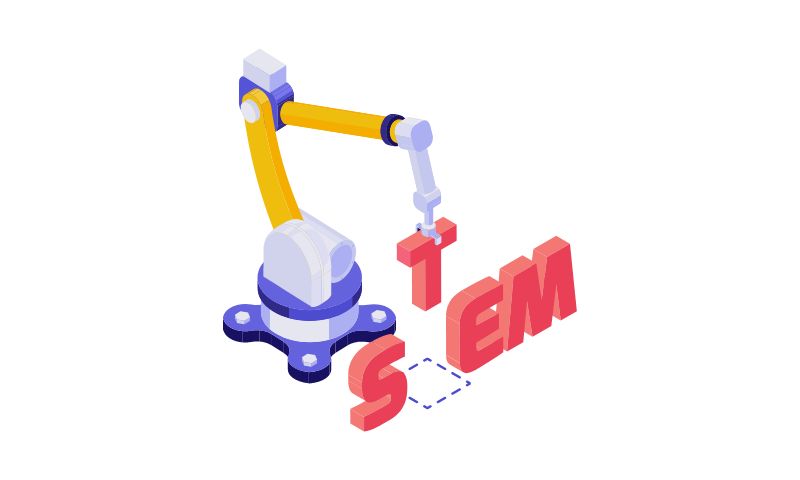
An obstacle avoidance robot is designed to navigate through a given environment while avoiding obstacles in its path. It utilizes sensors to detect obstacles and changes its course to prevent collisions. This project enhances your understanding of sensor integration and decision-making algorithms.
Components Required
- Microcontroller (Arduino or Raspberry Pi)
- Ultrasonic sensors
- Motor drivers
- Chassis and wheels
Autonomous Drone

Building an autonomous drone allows you to explore the world of aerial robotics. You can program the drone to perform tasks like flying to specific locations, capturing images or videos, and returning to the base automatically. This project combines hardware and software aspects of robotics.
Components Required
- Drone kit
- Flight controller
- GPS module
- Camera module
- Battery and charger
Robotic Arm
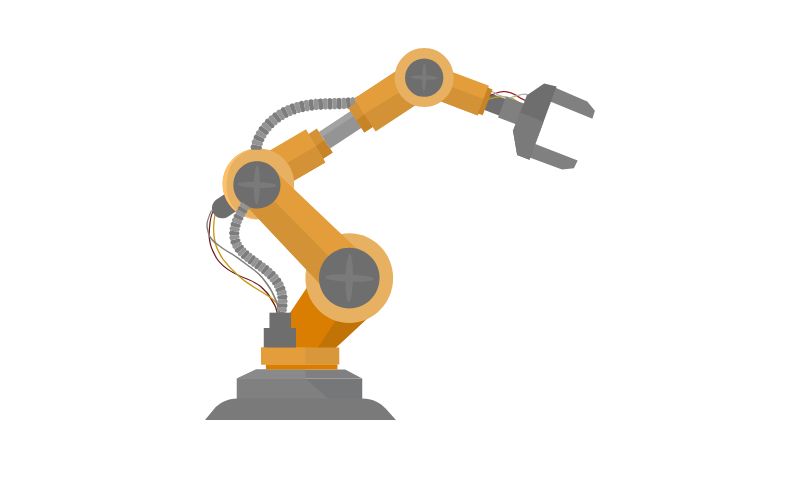
A robotic arm is a versatile project that can be used in various applications, such as pick-and-place tasks, assembly lines, or even as a prosthetic limb. Building a robotic arm helps you understand concepts like kinematics, control systems, and programming.
Components Required
- Robotic arm kit or individual robotic arm components
- Microcontroller or motor controller
- Sensors (optional)
- Power supply
Maze Solving Robot

Designing a maze-solving robot challenges you to create an intelligent system capable of navigating a maze and finding the optimal path to the destination. This project involves integrating sensors, pathfinding algorithms, and motor control to achieve the desired functionality.
Components Required
- Microcontroller (Arduino or Raspberry Pi)
- Line sensor module
- Motor drivers
- Chassis and wheels
Gesture Controlled Robot
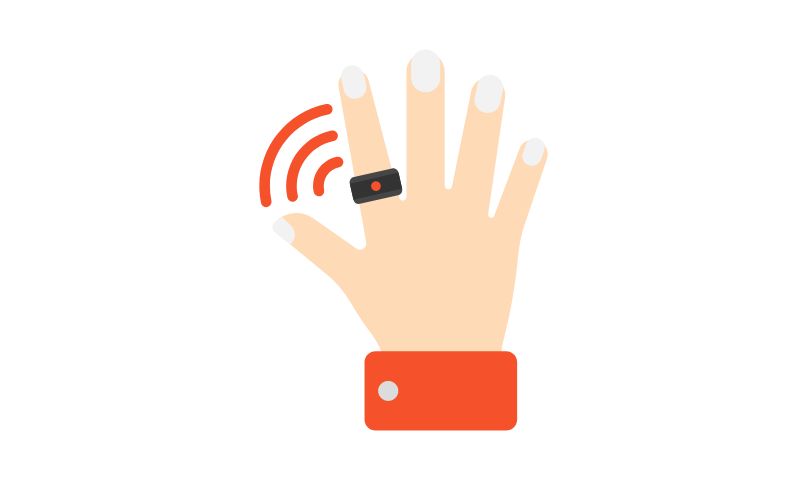
A gesture-controlled robot responds to hand gestures or body movements, allowing you to control its actions wirelessly. This project combines image processing and motion sensing technologies to create an interactive and intuitive robotic system.
Components Required
- Microcontroller (Arduino or Raspberry Pi)
- Camera module or motion sensors
- Motor drivers
- Chassis and wheels
Self-Balancing Robot

Building a self-balancing robot involves designing a system that can maintain its balance while moving on two wheels. It requires integration of sensors, control systems, and precise motor control. This project is an excellent opportunity to delve into control theory and feedback systems.
Components Required
- Microcontroller (Arduino or Raspberry Pi)
- Inertial Measurement Unit (IMU)
- Motor drivers
- Wheels
Robot Swarm

A robot swarm project focuses on coordinating multiple robots to perform tasks collectively. You can explore concepts like swarm intelligence, decentralized decision-making, and communication protocols. This project offers insights into distributed systems and cooperative robotics.
Components Required
- Multiple robots (Arduino-based or Raspberry Pi-based)
- Communication modules (Bluetooth, Wi-Fi, etc.)
- Sensors and actuators
- Centralized or decentralized control system
Sumo Robot Competition

Organize a sumo robot competition where robots battle each other in a ring with the goal of pushing the opponent out of the ring. This project involves designing and building robust and powerful robots capable of detecting and overcoming their opponents.
Components Required
- Sumo robot kit or custom-built robot chassis
- Motor drivers
- Sensors (line sensors, proximity sensors, etc.)
- Competition arena
Robot-Assisted Surgery
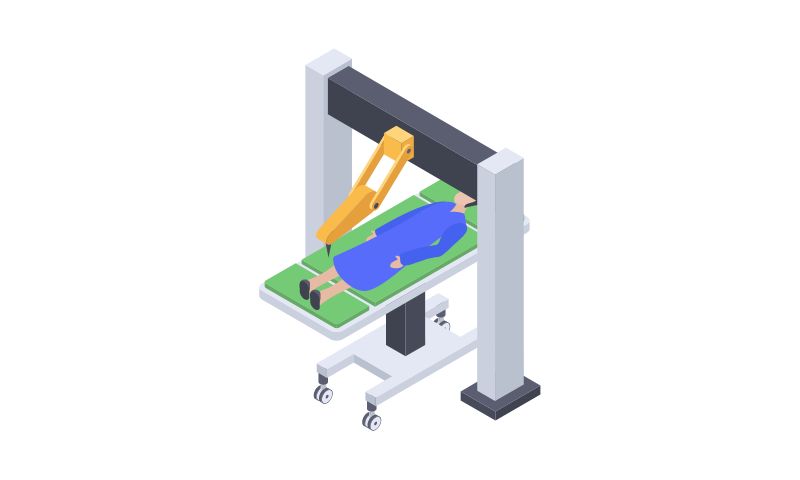
Robot-assisted surgery combines robotics and medical science to perform precise and minimally invasive surgeries. This project requires in-depth knowledge of robotics, mechanics, and medical procedures. Please note that this project involves complex requirements and should be pursued under professional guidance.
Components Required
- Surgical robot system (requires professional-grade equipment)
- Robotics software and control systems
- Surgical tools and instruments
Autonomous Lawn Mower

Building an autonomous lawn mower allows you to automate the task of mowing the lawn. The robot can navigate the yard, detect obstacles, and maintain a neat lawn without human intervention. This project combines sensor integration, path planning, and motor control.
Components Required
- Robotic lawn mower kit or custom-built robot chassis
- GPS module or boundary wire system
- Sensors (ultrasonic sensors, bump sensors, etc.)
- Motor drivers
Firefighting Robot

A firefighting robot is designed to assist firefighters in dangerous situations. It can navigate through hazardous environments, detect fires, and extinguish them using appropriate mechanisms. This project requires expertise in robot design, sensor integration, and fire suppression systems.
Components Required
- Firefighting robot kit or custom-built robot chassis
- Fire detection sensors
- Fire suppression mechanism (water spray, foam, etc.)
- Motor drivers
Robotic Wheelchair
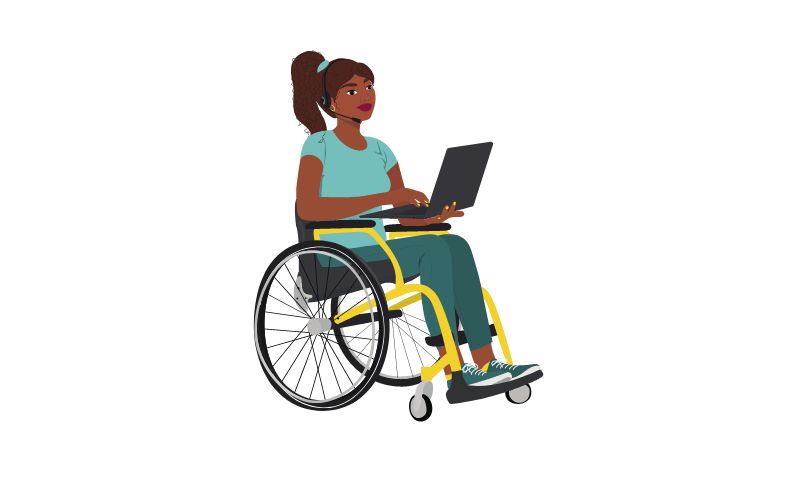
A robotic wheelchair helps individuals with limited mobility navigate their surroundings independently. It can be equipped with various features like obstacle detection, automatic navigation, and remote control. This project requires a combination of robotics, assistive technology, and human-machine interaction.
Components Required
- Motorized wheelchair base
- Microcontroller or motor controller
- Sensors (obstacle detection, proximity sensors, etc.)
- Joystick or control interface
Humanoid Robot
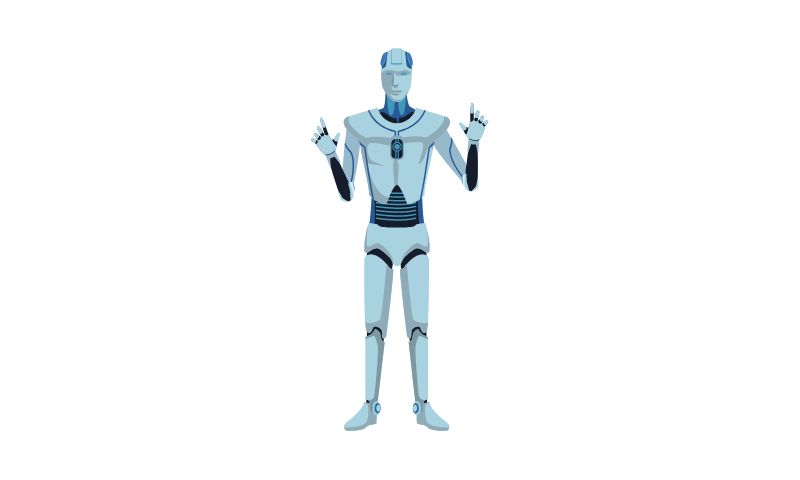
Building a humanoid robot is an ambitious project that aims to replicate human-like movements and behaviors. It involves mechanical design, kinematics, sensors, and advanced programming. This project provides an opportunity to explore the complexities of bipedal locomotion and human-robot interaction.
Components Required
- Humanoid robot kit or custom-built robot components
- Servo motors
- Microcontroller or motor controller
- Sensors (gyroscope, accelerometer, etc.)
These robotics project ideas offer a diverse range of possibilities for exploration and experimentation. Choose a project that aligns with your interests and goals, and embark on an exciting journey into the world of robotics!
What are your 10 robotics ideas?
These are mine 10 robotics ideas.
Obstacle Avoidance Robot
Build a robot capable of navigating through an environment while avoiding obstacles in its path. Use sensors to detect obstacles and develop algorithms to change the robot’s course to prevent collisions.
Line Following Robot
Create a robot that follows a designated path marked by a line. Utilize sensors to detect the line and program the robot to adjust its movement accordingly.
Robotic Arm
Design and construct a robotic arm capable of performing pick-and-place tasks. Explore concepts such as kinematics, control systems, and programming to enable the arm’s movements.
Autonomous Drone
Build an autonomous drone that can fly to specific locations, capture images or videos, and return to the base automatically. Combine hardware and software components to achieve autonomous flight capabilities.
Maze Solving Robot
Develop a robot that can navigate through a maze and find the optimal path to the destination. Implement sensor integration, pathfinding algorithms, and motor control to guide the robot through the maze.
Swarm Robotics
Create a group of robots that can collaborate and perform tasks collectively. Explore concepts like swarm intelligence, decentralized decision-making, and communication protocols to achieve coordinated behaviors.
Robotic Companion
Build a robot designed to interact with and assist humans in daily tasks. Incorporate natural language processing, computer vision, and autonomous navigation to create a helpful and engaging robotic companion.
Humanoid Robot
Construct a humanoid robot that can replicate human-like movements and behaviors. Explore mechanics, kinematics, sensors, and advanced programming to achieve realistic and interactive humanoid capabilities.
Telepresence Robot
Develop a robot that can be controlled remotely and provide a virtual presence for users. Incorporate video conferencing, mobility features, and user-friendly controls to enable remote communication and interaction.
Environmental Monitoring Robot
Build a robot equipped with sensors to monitor and collect data about the environment. Implement features like temperature, humidity, and air quality sensors to enable autonomous monitoring and data analysis.
What is the easiest robot to make?
The easiest robot to make largely depends on your level of experience and the resources available to you. However, one of the simplest robots to build for beginners is a basic wheeled robot. Here’s a simplified outline of the steps involved:
- Choose a platform: Start with a simple chassis that consists of a body and wheels. You can use materials like cardboard, plastic, or a pre-made robot kit.
- Install motors: Attach DC motors to the chassis, typically one for each wheel. These motors will provide the robot’s mobility.
- Connect wheels: Attach wheels to the motor shafts securely, ensuring they can rotate freely.
- Add a power source: Connect a battery or power supply to provide energy to the motors and other electronic components.
- Install a microcontroller: Use a microcontroller board such as Arduino or Raspberry Pi to control the robot’s movements. Connect the microcontroller to the motor drivers.
- Include motor drivers: Motor drivers act as interfaces between the microcontroller and the motors, allowing you to control their speed and direction.
- Program the microcontroller: Write or upload a simple program to the microcontroller that instructs the robot on how to move forward, backward, turn, and stop.
- Test and iterate: Once the robot is assembled and programmed, test its movements and make adjustments as needed. This may involve tweaking the code, adjusting motor speeds, or improving the stability of the chassis.
What are the 7 biggest challenges in robotics?
In the field of robotics, there are several significant challenges that researchers and engineers face. Here are seven of the biggest challenges in robotics:
Perception and Sensing
Developing robots that can perceive and sense the environment accurately is a major challenge. This involves designing and integrating sensors that can gather data about the robot’s surroundings and enable it to make informed decisions.
Mobility and Locomotion
Creating robots with efficient and adaptable mobility is a challenge. Designing robots that can navigate various terrains, overcome obstacles, and maintain stability in different environments remains an ongoing research area.
Manipulation and Dexterity
Enabling robots to manipulate objects with dexterity and precision similar to human capabilities is a complex challenge. Developing robotic hands and grippers that can handle a wide range of objects and perform delicate tasks requires advanced mechanical design and control algorithms.
Autonomy and Decision-Making
Achieving higher levels of autonomy in robots is a challenge. It involves developing algorithms and systems that enable robots to make decisions, plan actions, and adapt to changing situations independently.
Human-Robot Interaction
Designing robots that can effectively interact and collaborate with humans is a significant challenge. This includes developing intuitive interfaces, natural language processing, and social behaviors that facilitate seamless communication and cooperation.
Safety and Ethics
Ensuring the safety of robots and their interactions with humans is a critical challenge. Defining ethical guidelines and implementing safety measures to prevent accidents and address ethical considerations in various robotic applications are ongoing areas of research.
Scalability and Deployment
Scaling up robotic systems and deploying them in real-world scenarios pose challenges. Implementing robots in complex environments, integrating them with existing infrastructure, and addressing issues related to cost, maintenance, and scalability are key challenges in robotics.
What are 5 examples of a robot?
Here are five examples of robots:
Roomba Robot Vacuum
The Roomba robot vacuum is a popular household robot designed to autonomously clean floors. It uses sensors and algorithms to navigate through rooms, detect obstacles, and efficiently clean various surfaces.
Industrial Robot Arm
Industrial robot arms are commonly used in manufacturing and production environments. These robotic arms are programmable and equipped with multiple joints and end-effectors to perform tasks such as assembly, welding, and material handling.
Pepper Robot
Pepper is a humanoid robot designed to interact with humans in social and service-oriented settings. It can recognize faces, respond to voice commands, engage in conversations, and provide information or assistance in places like retail stores or public spaces.
Da Vinci Surgical System
The Da Vinci Surgical System is a sophisticated robotic platform used in minimally invasive surgeries. It consists of robotic arms equipped with surgical instruments, controlled by a surgeon who operates from a console. The system provides enhanced precision and flexibility during surgical procedures.
Mars Rovers
Mars rovers, such as the Curiosity rover and the Perseverance rover, are robotic explorers sent to the planet Mars. These robots are designed to traverse the Martian surface, collect data, take photographs, and conduct scientific experiments to study the planet’s geology and search for signs of past or present life.
Conclusion
Embarking on robotics projects opens up a world of creativity, innovation, and endless possibilities. Throughout this article, we have explored a diverse range of robotics project ideas that cater to beginners and seasoned enthusiasts alike.
By delving into these projects, you have the opportunity to learn about robotics concepts, enhance your technical skills, and bring your imagination to life. Robotics projects not only offer a platform for hands-on learning but also foster critical thinking, problem-solving, and collaboration.
Whether you’re interested in building a home automation robot, designing a line-following robot, or creating an autonomous drone, each project provides a unique learning experience.
As you undertake your robotics projects, don’t be afraid to push boundaries, experiment, and think outside the box. Remember to document your progress, celebrate your successes, and learn from any challenges you encounter along the way.
Engage with the vibrant robotics community, join forums, attend workshops, and seek inspiration from fellow enthusiasts. By immersing yourself in the world of robotics, you become part of a global community of innovators, researchers, and visionaries who are shaping the future of technology.
So, seize the opportunity, fuel your passion, and let your creativity soar as you embark on exciting robotics projects. Now, armed with the knowledge, skills, and inspiration gained from these robotics project ideas, it’s time to embark on your own robotic journey.
Gather your components, assemble your team, and unleash your imagination. Embrace the challenges, embrace the triumphs, and embrace the transformative power of robotics.
Frequently Asked Questions
Can I build these robotics projects without any prior experience?
Absolutely! Many of these projects can be tackled by beginners with enthusiasm and willingness to learn. Start with simpler projects and gradually work your way up to more complex ones.
Are there any age restrictions for working on these robotics projects?
There are no specific age restrictions. However, certain projects may require adult supervision due to their complexity or safety concerns. Always prioritize safety and follow guidelines.
How can I improve the performance of my robotics project?
Continuously learning and experimenting is key. Stay updated with the latest technologies, join robotics communities, and seek guidance from experts. Iterative improvements will enhance your project’s performance.
Can I modify the suggested robotics project ideas?
Absolutely! The project ideas provided are meant to inspire you. Feel free to modify and customize them according to your interests, resources, and goals.
Where can I find the necessary components for these robotics projects?
You can find robotics components at specialized online stores, electronics suppliers, or even local hobby shops. Additionally, various online platforms provide kits and modules tailored for robotics projects



